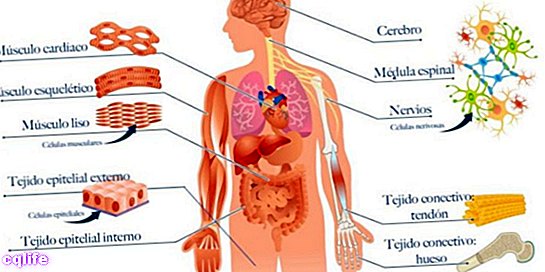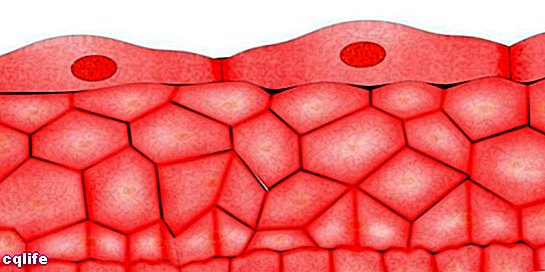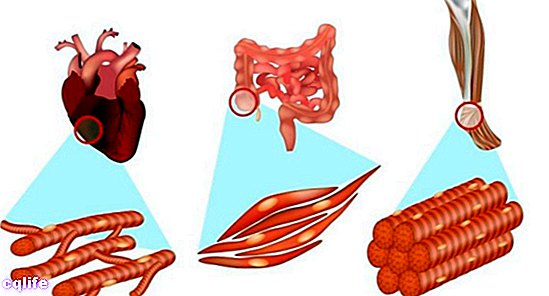- What are the tissues of the human body?
- Epithelial tissue
- Muscle tissue
- Connective or connective tissue
- Nervous tissue
We explain what the tissues of the human body are and the characteristics of the epithelial, muscular, connective and nervous tissues.

What are the tissues of the human body?
With the term "tissue", in biology and medicine, we normally refer to organic materials made up of a huge set of cells regularly distributed, which together serve the same purpose and have a common embryonic origin. Put more simply, tissues are the types of meat or pulp of the Body, formed by cells of different types but with the same physiological role.
The organization of the body in tissues is typical of living beings more complex. It is distinguished from those that are grouped into colonies Cellular, as is the case of sponges, capable, for example, of regrouping and recovering their structure from the other side of a sieve through which we separate it. This does not happen with the cells of the tissues, firmly connected to each other and in a relationship of mutual interdependence.
The human body, as well as that of animals and life forms multicellular complex, it is formed by tissues of different types, in charge of diverse functions and with their own characteristics, to whose study the discipline of histology. The four main types of tissue in the human and animal body are listed below.
Epithelial tissue

This is the name given to the tissue made up of multiple densely packed cells that make up the skin, that is, the limits of the body itself.
Its name comes from how we call this type of cortex: the epithelium, and although in other animals it fulfills clearer defensive functions (for example, by means of scales), in the case of mammals These are stratified cell assemblages and of two types:
- Squamous cells: They are the most external, flattened.
- Cuboidal cells: They are located deeper in the epithelium, the shape of which resembles a cube.
One of its functions is to protect internal tissues from the action of environmental elements, infections and aggressions from competitors (as far as possible). In addition, it has the ability to lubricate and protect itself, and is also lining the small intestine, where it helps the absorption of nutrients, and also the internal glands, where they secrete some enzymes and hormones.
Muscle tissue

Muscle tissue is that which gives our body solidity, structure and defined shape, and which also gives the body its complex range of voluntary and involuntary movements. It is made up of elastic cells capable of deforming and recovering their shape, called myocytes, and can be classified into three subtypes of tissue, which are:
- Skeletal muscle tissue. He who is subjected to Will of the mind, such as that of our arms and legs, or facial muscles, and which is composed of cylindrical and multinucleated cells, up to 30 cm in length, endowed with a large number of mitochondria to handle the energy required for body movements. Together, they build striated muscles, attached by a tendon to the bones of the body.
- Cardiac muscle tissue. As its name indicates, we refer to the muscles of the heart, made up of cardiomyocytes, elongated and branched cells, endowed with core central, and capable of forming terminal junctions with a high level of specialization, which facilitate the transmission of nerve impulses. Its function is to operate as a hydraulic pump to keep blood circulating through the body. For that reason, it does not obey our mind at all.
- Smooth muscle tissue. Composed of leimyocytes, spindle-shaped mononucleated cells, without striations or tubule systems, it is found in the walls of the hollow viscera (stomach, bladder, uterus, intestine, etc.) and most of the blood vessels. Your contractions do not obey the mind, but operate automatically.
Connective or connective tissue

In this case, a diverse group of organic tissues that are formed from the embryonic mesoderm are gathered under the same name, and that respond to the primary function of supporting and systemic integration of the human body. That is, it keeps everything together and everything in its place.
Connective tissue can be of various types, depending on its functions in the body. In the first place, we can distinguish between specialized connective tissues, which fulfill specific and specific functions (such as bone, cartilage, blood or lymphatic tissue) and non-specialized ones, which simply provide support and physical structure with their presence ( such as adipose or fibrous tissue).
On the other hand, we must also differentiate between:
- Dense or fibrous connective tissue. Composed of collagen, it holds things in place in a specialized way, be it the muscles attached to the bones (tendons and ligaments), or certain tissues separated from others (such as the capsules of certain internal organs).
- Loose connective tissue. Endowed with abundant extracellular content, it fulfills specific roles depending on the type it is: mucous connective tissue, endowed with defensive and structural roles; the reticular connective tissue, composed of collagen and which makes up many lymphoid nodes and organs; and mesenchymal connective tissue, which makes up the embryonic mesenchyme and provides specialized cells to all tissues.
Nervous tissue

It is made up of nerve cells, that is, neurons and glial cells, and makes up both the brain and spinal cord, in addition to the vast network of nerve endings that make up the nervous system of our body.
They are generally highly sensitive cells, capable of reacting to external and internal stimuli and of transmitting information through their connections. Thus, it efficiently and quickly links the entire body with the brain.
This tissue is in charge of processing our movements, through the somatic system that links the nerves with the skeletal muscles and executes the conscious orders, or the autonomic system, which operates automatically and takes care of the smooth and cardiac muscles.
